Liquified Natural Gas in Oregon: Difference between revisions
No edit summary |
No edit summary |
||
| Line 7: | Line 7: | ||
At the terminal, the LNG gas is transformed from liquid to a gaseous state and transported in a gaseous form through pipelines. | At the terminal, the LNG gas is transformed from liquid to a gaseous state and transported in a gaseous form through pipelines. | ||
Three [http://en.wikipedia.org/wiki/Liquefied_natural_gas Liquefied Natural Gas] projects have been proposed in Oregon — [http://en.wikipedia.org/wiki/ | Three [http://en.wikipedia.org/wiki/Liquefied_natural_gas Liquefied Natural Gas] projects have been proposed in Oregon — [http://en.wikipedia.org/wiki/Oregon_LNG Oregon LNG] (near Astoria), [http://en.wikipedia.org/wiki/Bradwood_Landing Bradwood Landing] (near Claskanie), and [http://www.jordancoveenergy.com/project.htm Jordan Cove] (near Coos Bay). | ||
[http://www.oregonlng.com/project.php The Oregon LNG project] | [http://www.oregonlng.com/project.php The Oregon LNG project], near Astoria, would include a marine receiving terminal, three full-containment 160,000 cubic meter LNG storage tanks, and facilities to support ship berthing and cargo offloading. The terminal would receive Liquefied natural gas shipped from overseas then transported down state through a new pipeline. | ||
[[File:Astoriagaspipeline.jpg|center|500px|Astoria LNG Pipeline]] | [[File:Astoriagaspipeline.jpg|center|500px|Astoria LNG Pipeline]] | ||
[http://en.wikipedia.org/wiki/Oregon_LNG The proposed Oregon LNG receiving facility] in Warrenton, Oregon, would be eight miles (13 km) west of Astoria, Oregon, on the Columbia River. The Astoria LNG proposal is the only Oregon LNG terminal that has not already received approval from the [http://www.ferc.gov/ Federal Energy Regulatory Commission]. | |||
[[File:Bradwood-landingjpg.jpg|center|500px|Proposed Bradwood Landing Site]] | [[File:Bradwood-landingjpg.jpg|center|500px|Proposed Bradwood Landing Site]] | ||
Revision as of 18:38, 18 February 2012

<< Back to: Green industry <<
Liquefied natural gas (LNG) is natural gas (predominantly methane) that has been converted temporarily to liquid form for ease of storage or transport. LNG takes up about 1/600th the volume of natural gas in the gaseous state. For ship transport, the gas is chilled to approximately negative 260 °F (127 °C), condensing the gas into a liquid, making it easier to ship.
At the terminal, the LNG gas is transformed from liquid to a gaseous state and transported in a gaseous form through pipelines.
Three Liquefied Natural Gas projects have been proposed in Oregon — Oregon LNG (near Astoria), Bradwood Landing (near Claskanie), and Jordan Cove (near Coos Bay).
The Oregon LNG project, near Astoria, would include a marine receiving terminal, three full-containment 160,000 cubic meter LNG storage tanks, and facilities to support ship berthing and cargo offloading. The terminal would receive Liquefied natural gas shipped from overseas then transported down state through a new pipeline.
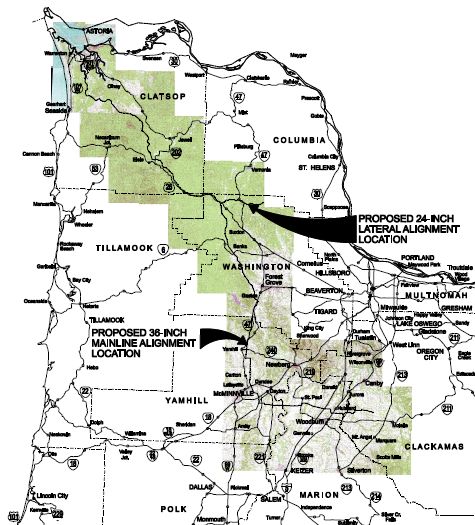
The proposed Oregon LNG receiving facility in Warrenton, Oregon, would be eight miles (13 km) west of Astoria, Oregon, on the Columbia River. The Astoria LNG proposal is the only Oregon LNG terminal that has not already received approval from the Federal Energy Regulatory Commission.
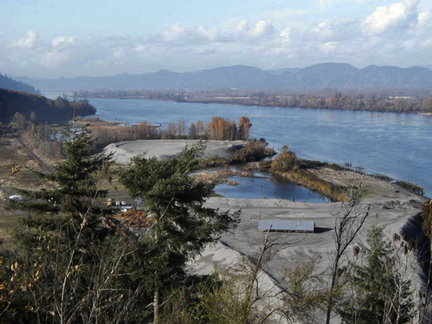
The Bradwood Landing LNG import terminal, upriver near Claskanie, was apparently stopped in March of 2011, when a 9th U.S. Circuit Court of Appeals decision threw out the license for the Bradwood Landing terminal. According to Columbia Riverkeeper Executive Director Brett VandenHeuvel, "Bradwood LNG was a dominant environmental issue for five years and now it is officially over." Foes feared possible impacts on fish, forests and farms.
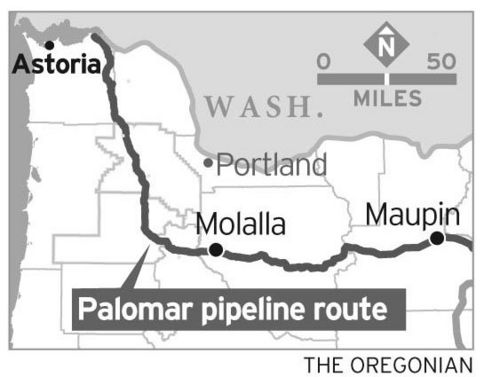
The NorthernStar Natural Gas company planned the Palomar Pipeline, a joint venture between NW Natural and Calgary, Alberta-based TransCanada Corp to import Liquified Natural Gas. A planned 36-inch diameter pipeline would stretch 217 miles from TransCanada’s Gas Transmission Northwest Pipeline in central Oregon to a point on the Columbia River near Astoria where it was to connect the Bradwood Landing project.
Oregon LNG battled Clatsop County officials over its right to build the pipeline, but the entire economic rationale for importing natural gas to the United States has become questionable given the huge new reserves of shale gas in the United States and Canada, reports The Oregonian. Gasland, a documentary by Josh Fox, explored environmental impact of hydraulic fracturing used to extract the gas.
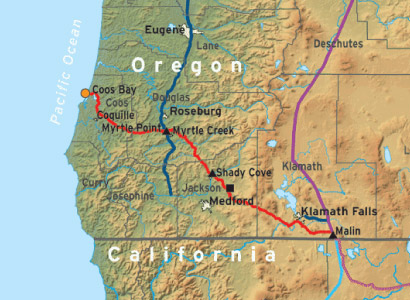
The Jordan Cove LNG storage facility would be located within the Port of Coos Bay, approximately 7 nautical miles from the entrance of the navigation channel, and pipe it south to California. Oregon's Land Use Board of Appeals has kicked back Coos County's approval of the Pacific Connector Gas Pipeline, ordering the county to reconsider the project's impact on the Olympia Oyster.
The 234-mile pipeline would carry gas from the proposed Jordan Cove liquefied natural gas terminal in Coos Bay to an interstate gas hub in Malin, near the California border in Central Oregon. From there, the gas would head south to California.
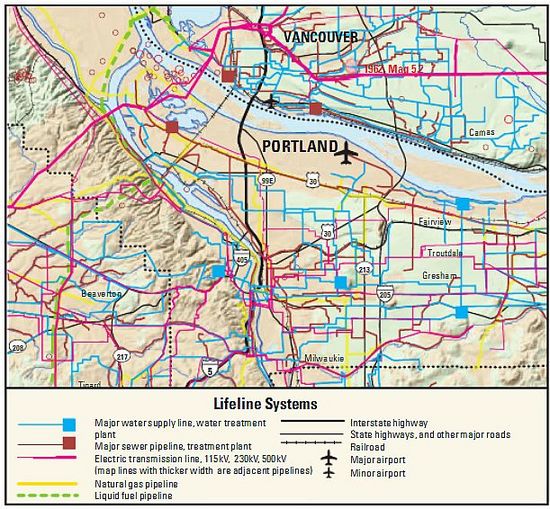
Oregon Geology maps out Portland's lifeline systems and Tsunami Hazard zones.
NEXT: Fuel Cells in Oregon
Back to: Green industry <<